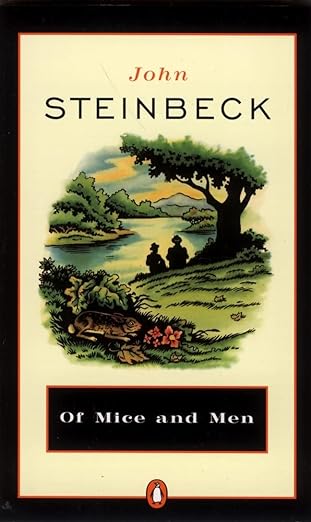Welcome, dear literary enthusiasts, to another captivating journey through the pages of classic literature. This week, we embark on an exploration of John Steinbeck’s poignant novella, “Of Mice and Men.” Prepare to be immersed in the harsh realities of the Great Depression era as we delve into themes of friendship, dreams, and the human condition. Join us as we unravel the complexities of Steinbeck’s timeless work and uncover the profound insights it offers into the human experience.
Introduction
As we step into the world of “Of Mice and Men,” we are transported to the rugged landscape of California during the Great Depression. Against this backdrop of economic hardship and social upheaval, Steinbeck crafts a powerful narrative that explores the bonds of friendship, the pursuit of dreams, and the inherent loneliness of the human condition. Join us as we journey alongside George and Lennie, two displaced ranch workers, and witness the highs and lows of their quest for a better life.
Quick Summary
“Of Mice and Men” follows the journey of George Milton and Lennie Small, two migrant workers seeking employment during the Great Depression. Despite their contrasting personalities – George is small and quick-witted, while Lennie is large and mentally disabled – the two share a deep bond and a dream of one day owning their own piece of land. As they navigate the challenges of life on the ranch and encounter a cast of colorful characters, their dreams are threatened by the harsh realities of their circumstances. Set against the backdrop of the American West, “Of Mice and Men” is a timeless exploration of friendship, sacrifice, and the pursuit of the American Dream.
Character List and Descriptions
George Milton: The quick-witted and pragmatic protagonist of the novella, George serves as a caretaker and protector to his friend Lennie. Despite his outward toughness, George harbors dreams of a better life and seeks to protect Lennie from the harsh realities of the world.
Lennie Small: George’s loyal but mentally disabled friend, Lennie possesses immense physical strength but lacks the mental capacity to fully understand his actions. His childlike innocence and love of soft things contrast sharply with his unintentional acts of violence, which ultimately lead to tragedy.
Curley: The aggressive and domineering son of the ranch owner, Curley represents the oppressive forces of authority and masculinity. His antagonistic behavior towards Lennie and others on the ranch foreshadows the conflicts that arise later in the story.
Curley’s Wife: The only female character in the novella, Curley’s wife is portrayed as a lonely and misunderstood woman trapped in a loveless marriage. Despite her flirtatious demeanor, she longs for companionship and connection, ultimately meeting a tragic end.
Slim: The wise and respected mule driver on the ranch, Slim serves as a voice of reason and moral authority. His calm and compassionate nature contrasts with the harsh realities of ranch life, offering a sense of stability and hope amidst the turmoil.
Themes
Friendship: At its core, “Of Mice and Men” is a story about the enduring power of friendship. The bond between George and Lennie serves as a source of comfort and strength in the face of adversity, highlighting the importance of companionship and mutual support.
Dreams and Aspirations: The novella explores the human desire for a better life and the pursuit of the American Dream. George and Lennie’s dream of owning their own piece of land symbolizes hope and optimism in the face of hardship, serving as a beacon of light amidst the darkness of their circumstances.
Loneliness and Isolation: Steinbeck vividly portrays the loneliness and isolation experienced by the characters in the novella. From Curley’s wife longing for companionship to Candy’s fear of being cast aside, each character grapples with the overwhelming sense of emptiness that accompanies life on the margins of society.
Injustice and Powerlessness: The novella exposes the injustices and power imbalances that pervade society, particularly during the Great Depression era. Characters like Crooks, the African American stable hand, and Candy, the aging ranch worker, are marginalized and disenfranchised, highlighting the systemic inequalities that exist within American society.
The Fragility of Dreams: Despite their best efforts, George and Lennie’s dreams ultimately remain unfulfilled, shattered by the harsh realities of their circumstances. The novella serves as a poignant reminder of the fragility of dreams and the resilience of the human spirit in the face of adversity.
Conclusion
In conclusion, “Of Mice and Men” stands as a timeless masterpiece that continues to resonate with readers for its exploration of friendship, dreams, and the human condition. Steinbeck’s evocative prose and richly drawn characters offer a profound meditation on the universal themes of love, loss, and the pursuit of meaning. Join us for more literary adventures and insightful discussions right here at Curvebreakers!
Looking for additional resources? Check out our comprehensive AP English Language and Writing study guide for more assistance on your literary journey. Happy reading!

